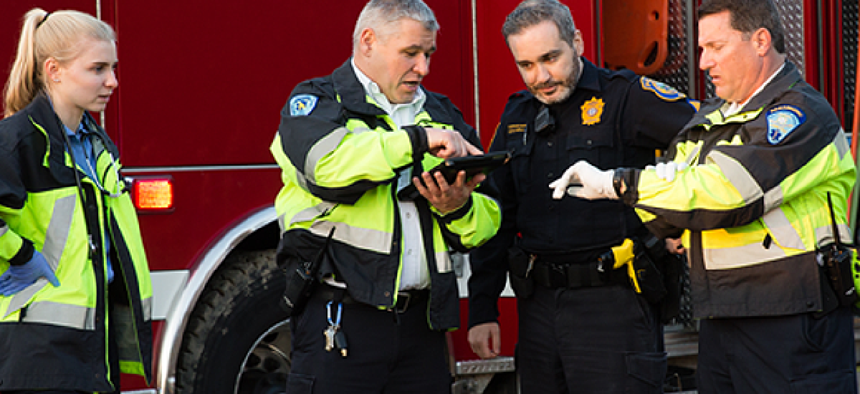Firstnet takes off

The First Responder Network Authority issued a task order this month to begin building the country's first cellular network dedicated to public-safety use.
After years of criticism for slow-moving and costly progress, the First Responder Network Authority in March issued a task order to begin building radio access networks in all 56 states and territories using Band 14.
Band 14 is the 20-MHz spectrum the government designated specifically for FirstNet, the country’s first cellular network dedicated to public-safety use. Available only to FirstNet subscribers, Band 14 will cover at least 95 percent of the U.S. population, giving responders access to more coverage and capacity than ever.
“We hold the nationwide license to the Band 14 spectrum – we being the FirstNet Authority – and that’s been provided to AT&T as part of our 25-year contract with them to build the dedicated FirstNet network,” FirstNet CTO Jeff Bratcher explained. FirstNet operates in the 700 MHz band.
“It provides good propagation in urban and rural areas, penetrating buildings and walls easily and covering larger geographic areas with less infrastructure,” Chris Sambar, senior vice president at AT&T-FirstNet, said in an email. “Band 14 also enables high-power user equipment with the ability to radiate at levels six times that typically allowed on an LTE system. This means we can extend the range of our existing network much further than it reaches today.”
The company plans to put Band 14 on a third of its cell sites this year and tens of thousands more in the next five years, Sambar added.
The additional spectrum builds on First Priority, the priority and preemption capabilities that AT&T has been implementing on its existing infrastructure since it won the contract, estimated to be worth $100 billion over 25 years. Priority means first responders are first in line for access when the network is clogged, and preemption means other users could be shifted to another band or kicked off altogether so that public-safety officials can stay connected.
Bratcher called these abilities “game changers and disruptive to the entire wireless network ecosystem” in the U.S. and worldwide, where approximately "30 different countries [are] looking to implement dedicated broadband networks for their users.”
The announcement of the task order also served as a preview of coming news about the build-out of FirstNet’s core network , which Sambar said he expects to launch at the end of this month..
As part of the FirstNet partnership, AT&T is building "a dedicated, evolved packet-core network,” Bratcher said. “This will give the first responders that use it a dedicated core network that will be a highly secure environment. It will be the foundation for innovation in some of our advanced functionalities coming over the next 25 years.”
The core separates public-safety and commercial traffic and is based on 16 critical objectives that were in FirstNet’s 2016 request for proposals. It is encrypted from end to end using FIPS 140-2-compliant virtual-private network solutions, and a security operations center will monitor it around the clock.
Lastly, geographically distributed core sites nationwide will enable FirstNet’s 99.99 percent service availability objective by delivering network performance and providing redundancy.
“The FirstNet core will serve as the foundation for greater innovation and more advanced functionality,” Sambar said. “With its launch, it will bring public safety different levels of priority as well as the ability to control those priority levels in near real time. And over time, it will deliver a range of next-generation public-safety capabilities like mission-critical push-to-talk and location-based services.”
No surprises have arisen since AT&T began deploying FirstNet capabilities last year, Bratcher said. He credits that to the time the authority spent consulting with public-safety officials on what they need from a broadband network.
“We took all that collective input that had been developed over the previous 10 years from different associations and public-safety groups that were really focused on what broadband could mean for them,” he said. “They shouldn’t have to worry about the priority and preemption capability. [FirstNet] should just work.”





